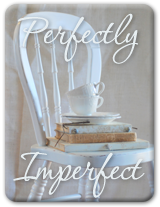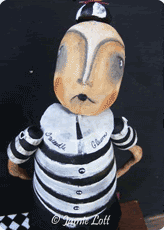It is no secret that I like "old" things. My child used to make me pictures at preschool then crunch the paper up into balls and unfold them again before giving them to me because as he said, "Mommy, I know how you like old looking things". Gahhh I love that little boy!
It isn't just about how old things look, though my favorite color is 'chippy blue' because it isn't my favorite unless it's chippy, it's also about the story old things tell. They are so much more interesting than something shiny and new.
I saw the coolest thing on DIY Network last night on This NEW House (
Japalachia - Episode DTNH-201H). A man who was building his house in the North Carolina mountains wanted his wood exterior to have an instant weathered wood look. I wish I could show you a picture of that house. It was huge! And each and every board had been treated with a vinegar and steel wool stain.
Vinegar and Steel Wood Stain
Man. I wish I had known about that a month ago! I would certainly have used that technique on
Sheila. For now, I'm wracking my brain for a project I can use it on. I think I have one in mind. For now, I thought I'd share with you what I learned about this technique. And I beg you, if you use it, or already have, let me know. I would love to see how it turned out!
Vinegar Steel Wool Stain How - To
Start with unfinished wood. If you'll be refinishing an already stained or painted piece make sure to remove all traces of the previous finish. Wipe the wood down. **NOT INTENDED for antique pieces. The wood may not be able to handle the acidic process. Do not use if your piece is priceless or irreplaceable.
Apparently using different vinegars can produce different stains. For example, an apple cider vinegar (or white vinegar, though apple cider seems to produce quicker results, some say it's the extra acidity of the apple. The DIY guy used Apple Cider Vinegar) makes a slate gray stain (think Restoration Hardware!) and with a nice Balsamic you get a brownish green color. Some folks even mix tea or a Rit dye to vary the color results.
So. Choose your vinegar.
Wash steel wool in warm water to remove oils used to prevent rusting.
Use REAL steel wool. Apparently there are generic versions out there that aren't the real thing and that just won't work.
Choose 00000 steel wool. Completely cover steel wool with vinegar of your choice. Some variations say to use half water, half vinegar but that might water the color of your stain down - again, the DIY guy used just vinegar and steel wool. However, if you find that your stain is too dark, you might decide to add a little water. Keep in mind though that you'll be sanding the final product and that will lighten it up a bit as well.
Soak your steel wool overnight covered tightly in a glass jar. It may take up to 48 hours but if you've used the right steel wool (remember real steel only) and washed any oils from it prior to use, you should see results pretty quickly. The stain is ready for use when the steel wool has completely dissolved.
Test your stain in an inconspicuous spot or on a scrap piece of wood. Just be sure to use the same kind of wood. As with different vinegars, different woods will respond differently giving you different colors.
Brush or wipe stain on in even strokes just as you would any other stain. Wipe off any excess. If you find you want a deeper/richer color tone, try soaking the wood in the stain.
Allow the wood to dry completely then sand lightly with 220-grit sandpaper. Seal the finished product with an oil, such as
Tung oil or a natural wax. Be sure to research which of these would work best for your project and the finished look you desire as some of them can change the color or finish when applied.
Oh. And I guess I should tell you, it stinks. Alot.
Finally, and most importantly, send me some pictures or a link! I wanna see!!

































































































